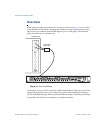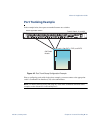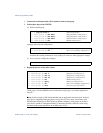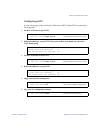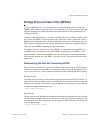
Alteon OS Application Guide
Chapter 4: Ports and Trunking
10142C4911, January 2007
Link Aggregation Control Protocol
Link Aggregation Control Protocol (LACP) is an IEEE 802.3ad standard for grouping several
physical ports into one logical port (known as a dynamic trunk group or Link Aggregation
group) with any device that supports the standard. Please refer to IEEE 802.3ad-2002 for a full
description of the standard.
The 802.3ad standard allows standard Ethernet links to form a single Layer 2 link using the
Link Aggregation Control Protocol (LACP). Link aggregation is a method of grouping physi-
cal link segments of the same media type and speed in full duplex, and treating them as if they
were part of a single, logical link segment. If a link in a LACP trunk group fails, traffic is reas-
signed dynamically to the remaining link/s of the dynamic trunk group.
NOTE – LACP implementation in Alteon OS does not support the Churn machine, an option
used to detect if the port is operable within a bounded time period between the actor
and the partner. Only the Market Responder is implemented, and there is no marker protocol
generator.
A port’s Link Aggregation Identifier (LAG ID) determines how the port can be aggregated.
The Link Aggregation ID (LAG ID) is constructed mainly from the system ID and the port’s
admin key, as follows:
System ID is an integer value based on the switch’s MAC address and the system priority
assigned in the CLI.
Admin key
A port’s Admin key is an integer value (1 - 65535) that you can configure in the CLI. Each
GbESM port that participates in the same LACP trunk group must have the same admin key
value. The Admin key is local significant, which means the partner switch does not need to use
the same Admin key value.
For example, consider two switches, an Actor (the GbESM) and a Partner (another switch), as
shown in Table 4-1.
In the configuration shown in Table 4-1, Actor switch ports EXT1 and EXT2 aggregate to
form an LACP trunk group with Partner switch ports 1 and 2.
Table 4-1 Actor vs. Partner LACP configuration
Actor Switch Partner Switch 1 Partner Switch 2
Port EXT1 (admin key = 100) Port 1 (admin key = 50)
Port EXT2 (admin key = 100) Port 2 (admin key = 50)




